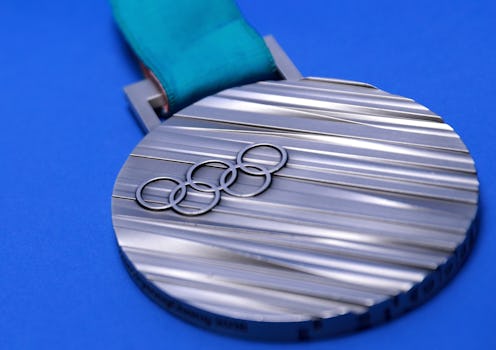News
The 2018 Winter Olympics Silver Medal Is Worth Less Than You Think

Unlike its medal superior, an Olympic silver medal turns out to be remarkably true to its name. While a modern gold medal is made primarily of silver and only slightly more than 1 percent gold, the silver medal is — surprise, surprise — almost fully silver. And while prices can fluctuate a bit, depending on the commodities market, generally an Olympic silver medal is worth a few hundred dollars.
Because each Olympic games issues its own medal design, the precise numerical price tag of any given medal can vary. For instance, the medals awarded at the 2016 Summer Olympics in Rio De Janeiro were the largest in history. So, obviously, more metal mass equals a higher price point. But generally, the silver medal is worth around $300 or so.
Silver is nowhere near as expensive as gold, which helps explain why it's the base metal for both 1st and 2nd place Olympic finishers. And the official Olympics organization does have set standards for the material makeup of its medals.
Both gold and silver medals are to be 92.5 percent silver. Olympic champions do get a dollop of real gold, however. Those top prizes must be plated with at least six grams of genuine gold. And no host country is allowed to skimp excessively on size. All medals must be a minimum of three mm thick and 60 mm in diameter.
Of course, the market price for a commodity is only part of the equation. For most athletes, the worth of scoring an Olympic medal is probably impossible to calculate.
And for the most elite and famous of athletes, an Olympic medal can demand a price tag far beyond what its basic metal is worth. The highest price paid for a gold medal to date was the $1.47 million spent by billionaire Ron Burkle for one of legendary track star Jesse Owens' four golds.
Of course, Owens' story is one-of-a-kind, even for the competitive pool of history-making athletes that is the Olympics. Representing the United States of America at the infamous 1936 Berlin games, Owen — a black man — was deemed racially inferior in the Nazi ideology. Beating Owen was not just a point of national pride for the German track team. As supposedly superior specimens, it was demanded by Nazi creed.
But no one could stop Owens. He won the 100-meter race, the 200-meter race, the broad jump, and earned a team medal in the Americans' 4x100 relay with a record-setting time that would hold for 20 years. The collision of Owens' story with history makes his gold medals (clearly) worth quite a lot.
Another Olympics legend is the so-called "Miracle on Ice." After winning six of the previous seven ice hockey Olympic gold medals, the former Soviet Union represented one of the most dominant teams in sports history in 1980. But that year, the United States ice hockey team managed to beat the U.S.S.R. on a score of 4 to 3 in the final game.
The Cold War had hit a peak the previous year, with the Soviet invasion of Afghanistan. So the unbelievable ice hockey victory tasted that much sweeter to Americans. And arguably no one was more crucial to their success than goalie Jim Craig. Of 39 shots, Craig blocked 36.
When he auctioned off his Olympics memorabilia in 2016, Craig's gold medal began with an estimated price of $1.5 to $2 million. But the medal failed to reach its asking price, and thus remains in Craig's possession.
Another factor in an individual medal's worth is the recentness of its associated games (newer medals are more expensive, since less are on the market). Additionally, winter medals are generally worth more, since there are fewer events as compared to the summer games.